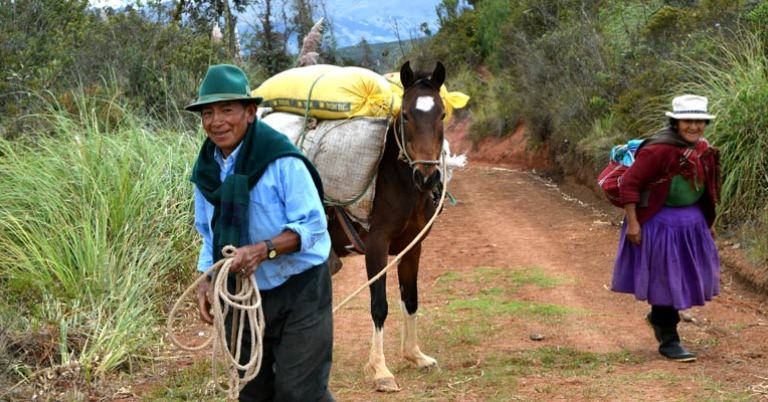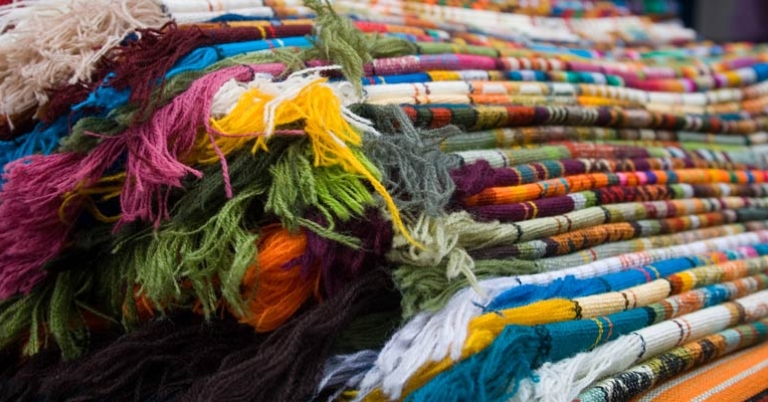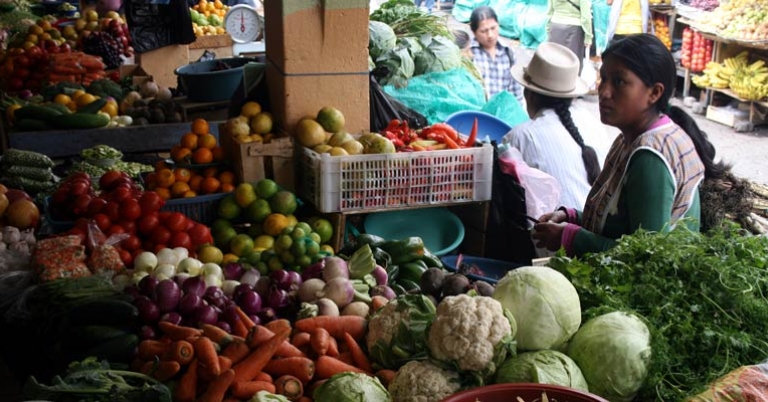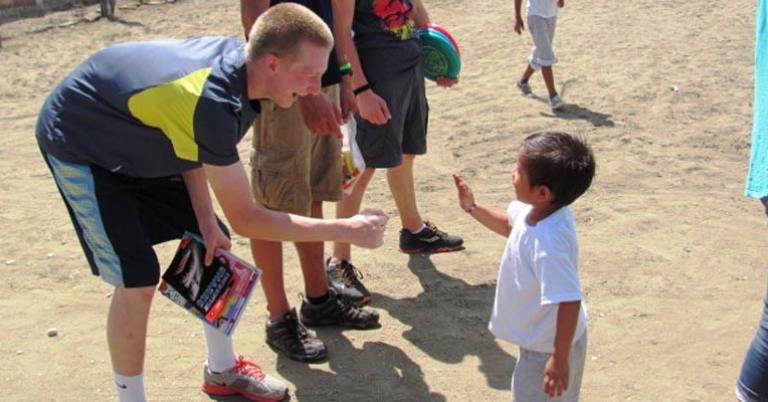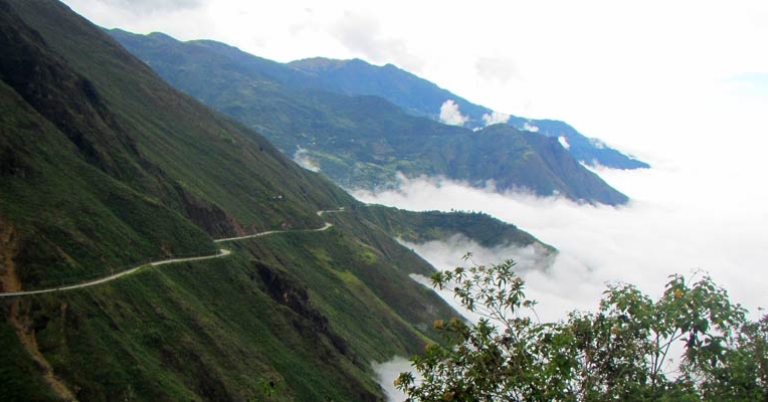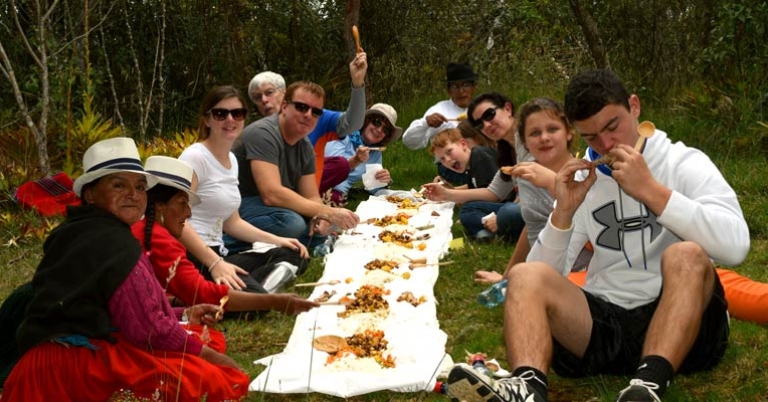Ecuador | Family Cultural Discovery
Duration:
Interests:
About this program
This immersive program gives you and your family the opportunity to be involved with a local indigenous family while staying in their community. Learn about the local culture and traditions, help family members with their daily life activities or work with them to improve the community school or the park, and assist in any other needs they might have. Share precious moments that will be treasured in your family memory forever. A great family enriching experience!
Program highlights
- Visit the best-preserved historical center in the Americas.
- Straddle both hemispheres at once at the Middle of the World Monument.
- Meet a local indigenous family and stay at their house.
- Take a train ride through Andean valleys aboard a locomotive.
- Participate in a "Minga," working collaboratively with community members to improve their neighborhood.
Family features
- Evening family activities and interaction with local family
- Child-friendly menus
- Service learning activities
- Child-friendly and experienced tour guides
- Accommodation in a local family lodge (family house)
What makes us different
Service anytime
Cultural immersion
Cultural Discovery
Custom-tailored trips
Support local communities
Flight arrangements
Daily Itinerary
Print ItineraryQuito
Day 1Quito
Day 2Otavalo
Day 3Otavalo
Day 4Minga Community
Day 5Chota Valley
Day 6Quito
Day 7Day 8
Pricing
Print PricingPlease call 800-451-7111 for your price.
What's Included
- Activities and meals as mentioned in itinerary
- Local guide during tours only
- Non alcoholic beverage with meals
What's Not Included
- International airfare
- Items of personal nature
- Tips
Travel Info
Print Travel InfoEntry & Exit Requirements
U.S. and Canadian citizens must have a valid passport to enter Ecuador. Passports must be valid for at least six months after the date of departure.
For visits fewer than 90 days, visas will be issued upon arrival in Ecuador. Tourists may be required to provide evidence of return or onwards travel.
If you are not traveling with a U.S. passport, please check with the Embassy of Ecuador for the requirements based on your nationality.
Health Information
IMMUNIZATIONS
The Centers for Disease Control recommends that all travelers be up to date on routine vaccinations such as measles-mumps-rubella (MMR) vaccine, diphtheria-pertussis-tetanus vaccine, varicella (chicken pox) vaccine, and your yearly flu shot before every trip.
There are no vaccinations required for entry into Ecuador.
Some physicians recommend that travelers get hepatitis A and typhoid vaccines before visiting Ecuador.
Yellow fever is a risk in certain parts of Ecuador. The CDC recommends the yellow fever vaccine if you are traveling to these areas.
Please consult your physician for additional information and recommendations based on your individual circumstances.
MALARIA
The CDC warns that travelers to South America may be at risk for exposure to malaria. Malaria is caused by a parasite found in Anopheles mosquitos, which are active from dusk until dawn. Prevention is twofold: the use of anti-malarial drugs and the prevention of insect bites. If you choose to use an anti-malarial drug, as recommended by the CDC, see your physician for a prescription.
CHIKUNGUNYA
In December 2013, French Guiana reported locally transmitted cases of chikungunya for the first time in South America. Local transmission means that mosquitoes in the area have been infected with chikungunya and are spreading it to people. CDC recommends that travelers to the South America area protect themselves from mosquito bites.
Zika Virus
Locally transmitted cases of Zika virus have been reported in Ecuador. Local transmission means that mosquitoes in the area have been infected with Zika and are spreading it to people. The CDC recommends that travelers to Ecuador protect themselves from mosquito bites. As a precaution, the CDC advises women who are pregnant to consider postponing travel to any area where Zika virus transmission is ongoing.
ALTITUDE SICKNESS
Upon arrival at locations of high elevation, shortness of breath and a pounding heart are normal responses to the lack of oxygen in the air. However, for some visitors, these symptoms can deteriorate into altitude sickness. Headache, extreme tiredness, dizziness, nausea, and loss of appetite are standard symptoms. Staying hydrated and well rested is important to adjust to the altitude. Avoiding heavy, fatty foods and alcohol in the days before arriving to altitude can help. Over-the-counter medications are also available to help prevent or alleviate symptoms. It’s advisable to avoid sleep medications, as they can slow breathing and respiration, which aid in getting the blood oxygenated while sleeping. Participants who take blood pressure medications should discuss this with their doctor as the medication can drop pressure too low at times.
SUN EXPOSURE
The effects of the sun can be damaging to the eyes and skin. Spending time outdoors exposes you to the sun’s harmful ultraviolet (UV) rays, even on cloudy days. To protect yourself from the sun, use a broad spectrum sunscreen of at least SPF 15, protect skin with clothing, wear a wide-brimmed hat and sunglasses, and drink plenty of fluids.
Resources
Print ResourcesSuggested Packing List
To help you get ready for your expedition, below is a suggested packing list.
You may find many of the items below in the New Headings Gear Store. Use code HolbrookGuest10 for a 10% discount on your purchase.
CLOTHING
- Comfortable rubber-soled walking shoes (water-resistant or waterproof are suggested)
- T-shirts
- Pants (cotton, lightweight)
- Shorts (loose, comfortable)
- Sweatshirt/cotton sweater/fleece jacket
- Lightweight rain jacket or poncho, windbreaker
- Rain poncho
- Visor/wide-brimmed sun hat
- Scarf or bandana
- swimsuit(s)
MISCELLANEOUS
- Passport and photocopies of all documentation
- Prescription medicines, motion sickness pills or altitude sickness medications
- Money, especially small bills in good condition ($1, $5, $10, $20)
- Extra batteries
- Sunblock and lip balm
- Insect repellant (with DEET)
- Sunglasses with strap
- Small backpack (for day walks)
- Water bottle
- Flashlight or head lamp
- Travel alarm clock or inexpensive waterproof wristwatch with alarm
- Binoculars
- Camera and related equipment, such as charger, tripod, lenses, memory cards
- Clothes pins
- Trash bags (for wet/dirty laundry)
- Plastic bags/twist ties/Ziploc bags
- Beach towel or small blanket
- Notebook and pens
